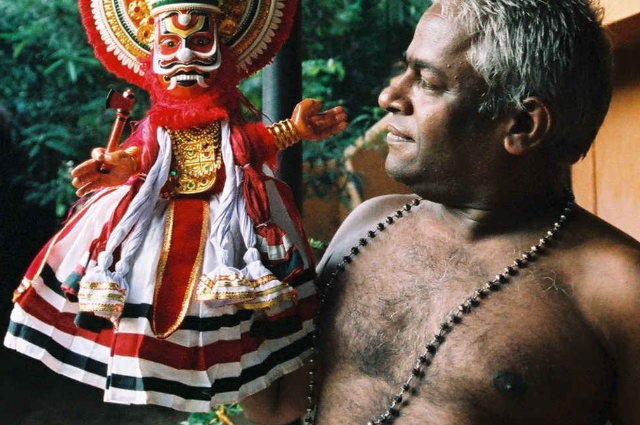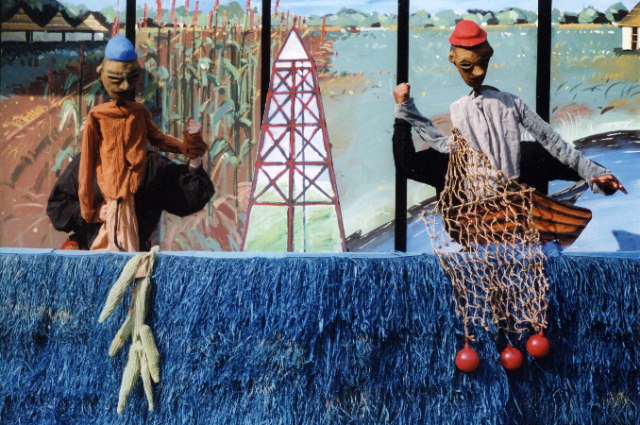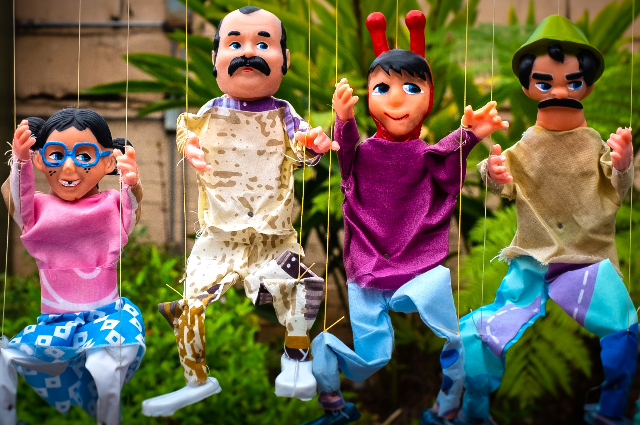
In the age where loads of content flow through our cellphone; in the age where every day we want some new stories and plot twists to consume, the tradition of ancient puppetry is losing its relevance. Before dwelling deep into this, let us first understand what puppetry is? How it works and what purpose it serves.
What is puppetry?
A doll or a figure controlled and manipulated by a person so that it appears to be moving on its own is called a puppet. So when a whole show is organized with the use of music and human voice in the form of play it is called as puppetry.
History of puppetry:
The advent of puppetry in India cannot be dated, but mythology provides at least two stories that are witness to the importance of this art, even if they don’t give any historical data. According to one legend, the creator Brahma gave life to the adi, the first nat puppeteer, and created the first puppet for the pastime of his wife Saraswati. Not satisfied with his work, Brahma expelled the puppeteer to earth, starting the line of nat bhatt puppeteers. This legend applies most probably to the Rajasthani tradition, nat Bhatt being the name of the puppeteer cast from this region (Sarma and Singh 2010:35). An alternative legend has as protagonist the god Shiva, patron of puppetry, and his wife Parvati.
An artisan manufactured two wooden dolls that captured the attention of Parvati—the goddess and his divine companion entered the dolls and started an exquisite dance, and when they got sick of this play they abandoned the dolls and the artisan was very sad at his dolls being lifeless again. With the help and blessings of the gods, the artisan then invented a system of strings to move the dolls, and so puppetry was born (Chattopadhyay 1995 (1975):159). Many literary sources also have mentioned of puppetry such as Mahabharata, Ramayana, Panini's grammar, and Patanjali's text.
In traditional puppetry, the plots or stories are mainly derived from Mahabharata, Ramayana and. Puranas. These stories allow puppeteers to teach masses about Gods, heroes, and the ethical standards of society. Over the centuries, puppetry has served educational and entertainment purposes.
Who made the first Puppets of this age?
Puppetry as an art form is believed to be more than 3000 years old. The earliest puppets might have originated in Egypt. Puppets made of ivory and clay were discovered in tombs. Ancient Greek Scholars like Aristotle and Plato had mentioned Puppets as early as 422 B.C.
Let us now look at the types of puppetry.
There are four major types of puppetry:
- Glove Puppets
- Rod Puppets
- Shadow Puppets
- String Puppets
1) Glove puppetry
Which are the Glove Puppet Forms of India?
Glove puppets are popular among a few states like Kerala, West Bengal, Orissa, and Uttar Pradesh. Glove puppets are also known by the names such as hand puppets, sleeve puppets, palm puppets. Further information is listed below.
Glove puppets are further classified as:
- Sakhi Kundhei Nata: It is the glove puppetry that is popular in Orissa. The plays are largely based on the stories of Krishna and Radha. It is prominent in Bhubaneswar and Cuttack districts.
- Pavakoothu: It is popular in Kerala. The conventional themes are based on Mahabharat and Ramayan.
- Beni Putul: It means Dolls for Commercial purposes. It was used as a tool of defiance against oppression by the British. This was popular in East Midnapur, Murshidabad, and 24 Parganas Districts.
2) Rod puppetry
Rod puppets are an extension of glove puppets. Rod puppets are larger than glove puppets and are supported and controlled from below using one or more rods/sticks of distinct sizes. Rod puppetry is famous in the states of West Bengal and Orissa. These puppets are usually made of 3 joints. The head of the puppet is supported by the main rod and is joined at the neck and both hands are tied to the rods at the shoulder.
The main rod which supports the head of the puppet is hidden by a robe or outfit of the puppet. The side rods are connected to the hands of the puppet. The hands are manipulated by the puppeteer to show movements. The body, face, and hands of the puppet are made using bamboo, rice husk, hay. All are mixed and molded into the crucial shape. puppets don't have legs. Puppets are draped in dhoti, lehnga, or saree as per the requirements of the characters.
Rod Puppetry in States Across India:
1. West Bengal Rod Puppetry - Putul Nach:
- Rod puppetry is popular and practiced in West Bengal.
- In simple words, Putul Nach can be translated as dancing dolls. These puppets can weigh up to 10 kilograms.
- The height of the puppets are 1.5 meters and they are built over 2.5-meter long bamboo sticks.
- Puppets are decorated in local painting style and costumes are elegantly designed.
- The theme of the plays are Ramayana, Satee Behula. These days apart from folk stories even movie plots are used for puppet plays to make them more relevant and interesting.
2. Odisha Rod Puppetry – Kathi Kandhe:
- In Orissa, the Rod Puppetry is known as Kathi Kandhe.
- Compared to Putul Nach rod puppets of West Bengal, the Kathi Kandhe rod puppets are much smaller in size.
- The size of Orissa Rod Puppets are about 12 to 18 inches.
- The stories are based on epic stories of Ramayana, Puranas, and social issues. The puppets are manipulated by the puppeteers squatting behind a screen.
- This form of puppetry is specifically popular in Kendujhar District. The music in the play begins with a short piece of ritual orchestral preliminary called Stuti and is followed by the play.
- Generally, medieval songs like Bhajan, Koili, and Chautisha are sung during the performance. However, the songs are sung differently or the style is consciously changed to make them more popular
3. Bihar – Yampuri:
- The Rod puppetry that is practiced in Bihar is known as Yampuri. The Rod puppets in Bihar are made of wood.
- Another difference between the rod puppetry of Bihar and the rod puppetry of West Bengal and Orissa is that here the puppets do not have any joints. As the puppets do not have any joints, there is not much flexibility in the arms and legs of puppets, hence the puppeteers need to have a great skill set while playing Yampuri rod puppets.
3) Shadow Puppetry
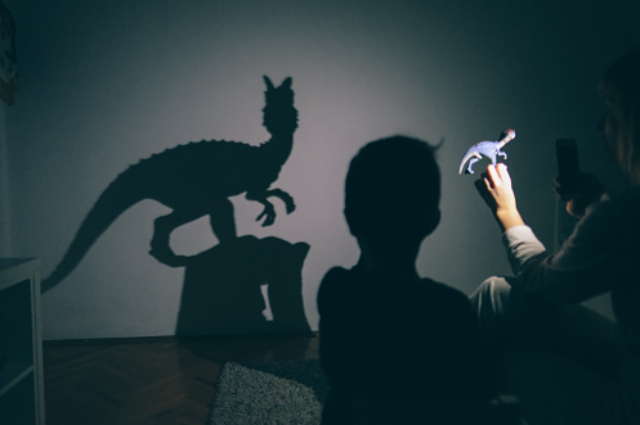
Shadow play, also known as shadow puppet try uses flat articulated cut-out figures (shadow puppets) which are held between a source of light and a translucent screen. The cut-out shapes of the puppets sometimes include transparent color or other types of detailing. Various effects can be obtained by moving both the puppets and the light source. An expert puppeteer can make the figures appear to walk, dance, fight, nod, and laugh.
You might have seen this type of puppetry during festive season like Dussehra, where the whole story is illustrated using shadows of these characters.
Types of shadow puppetry:
- Black Light Puppet – Puppets are lit with Ultra Violet (UV) light
- Bunraku Puppet – Used in Japan
- Carnival Puppet – Used in USA, South Africa
- Light Curtain Puppet
- Motueka – Kind of Shadow Puppet forms used in Indonesia
- Object Puppet – This puppet is assembled using everyday objects.
4) string puppetry
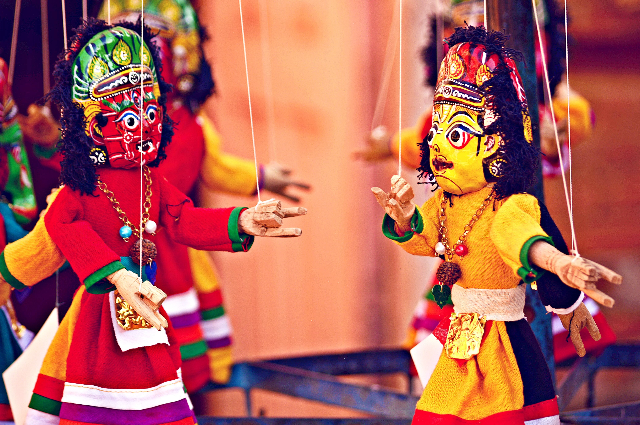
String puppets are attached with two to five strings which are normally tied to the fingers of the performer, who manipulate and control the puppets. The very popular string puppets in India are the Kathputli tradition of Rajasthan. These puppets are carved from a single piece of wood and then draped with colorful long flowing skirts from the waist and headgears. String puppets are also popular in Orissa, Karnataka, and Tamil Nadu.
Types of string puppetry:
- Kundhei, Odisha: The string puppets of Orissa are known as Kundhei. Made of light wood, the Odisha puppets have no legs but they wear long streaming skirts. They have more joints and therefore, they are more versatile, articulate, and easy to manipulate.
- Gombeyatta, Karnataka: They are styled and designed like the characters of Yakshagana, the traditional theatre form of the Karnataka region. Episodes enacted in Gombeyatta are usually based on incidents of the Yakshagana plays. The music that accompanies is a dramatic and beautiful blend of folk and classical elements.
- Bommalattam, Tamil Nadu: string Puppets from Tamil Nadu are known as Bommalattam. It combines the techniques of both rod and string puppets. They are made of wood and the strings for manipulation are tied to an iron ring which the puppeteer wears like a crown on his head.
Why is Puppetry Art Dying?
There are various reasons for it.
- Lack of patronage in the modern age as it no longer attracts people's attention.
- Competition from Electronic television media, which is a preferred mode of entertainment. With the coming of OTT, platforms' focus is now more on global modernistic stories rather than on local folks. Also, People find it more appealing to watch mythological stories of Ramayana and Mahabharata on electronic media rather than in Puppetry.
- Puppetry Art is usually confined to only devotional and mythological stories like Ramayana and Mahabharata. With changing times, Puppetry does not take up modern social issues which can be appealing to the masses.
- Puppetry lacks modernization in terms of script, lighting, sound, plots, and other stage effects.
But why is Puppetry Important to the present day?
Puppetry is important because it can help children in developing the following skills.
- Language and Communication skills.
- Helps in social and emotional development.
- Helps in increasing listening skills.
- Helps in using their imagination.
Alongside these benefits to children, in the last decades, the benefits of puppetry have also been reaped by government initiatives such as hygiene, family planning, for stopping female infanticide where it used puppetry to spread awareness on these issues.
With time, many arts lose their relevance and charm and so the puppetry. But nowadays there's craze in youth for vintage things, so there's huge potential for puppetry to grow and make its place in the hearts of the people as it used to do.
. . .
Reference:
- Indian art and culture by Nitin Singhania
- Insightsindia.com
- An introduction to Indian art- NCERT

